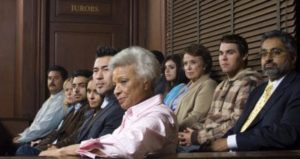I am a social science nerd. I find people endlessly complex and fascinating, with equal layers of predictability and mystery, so when I am not at work on jury research, witness prep or trials, I am often reading social science research or training myself in new skills. So the other day I was reading Nurture Shock by Po Bronson and Ashley Merryman, which reports on recent research in child development (relevant to working with trial lawyers for multiple reasons).
In their section on language development, they discuss recent research that shows the critical factor in determining the development of a toddler’s vocabulary is not the number of words to which the child is exposed but the way that the parent interacts with the child when the child vocalizes. At this age, kids are still learning both how to use their vocal muscles and how to hear where one word ends and another begins, so their ability to mimic mom and dad (or mom and mom; or dad and dad) is limited. What they are focusing on, researchers have found, is recognizing the grammatical and vocal patterns that help them pick out words from the stream of sound that they hear. In other words, kids don’t learn vocabulary first and then grammar: they learn grammar first and from that, learn words. Exposing them to more external stimuli – more vocabulary words – therefore is not helpful. It can even overwhelm and confuse them if they do not get the right cues from their parents. What they need is the right stimulus to help them develop the internal pattern recognition that allows them to actively create utterances themselves.
How is this relevant to telling your trial story? In the same way that kids learn (and even make up) individual words from grammar, we adults extract the elements of stories from the frames that we are given. We don’t create stories from the facts up (even though the law suggests this, with its emphasis on the evidence). We “create” the facts from the story (frame) down. This involves both selective attention to the evidence, focusing on those facts that confirm the frame we already are inclined to believe; and, at times, making up “facts” that are necessary to make the story complete or consistent, since we like our stories to be smooth, even and finished in appearance, just like we like our houses, with everything in its place.
In the same way that two different frames lead to two very different finished houses, two different story frames lead to two very different understandings of the facts.
And just as a kid can get overwhelmed with being thrown too many vocabulary words when she doesn’t know why she is hearing them or how to apply them to her understanding of language, jurors can get overwhelmed with too many facts whose relevance to the story is not clear. It’s like giving jurors more building materials than are called for in the design of a house, leaving them to figure out what is part of the design and what are just extras, leftovers that aren’t needed.
That’s why you want to figure out your trial story and themes relatively early in your trial process – before or in the early stages of discovery or investigation. This keeps you focused on the evidentiary materials you need to present your best case. Of course, you may revise or even entirely rewrite your story as it meets the facts and as pretrial rulings change the shape of the trial terrain. Nonetheless, your vision will still be guided by understanding the core story you want to tell. This is the best path to consistent litigation success. Even when you are oriented towards settlement, having a strong trial story will help you get there.





